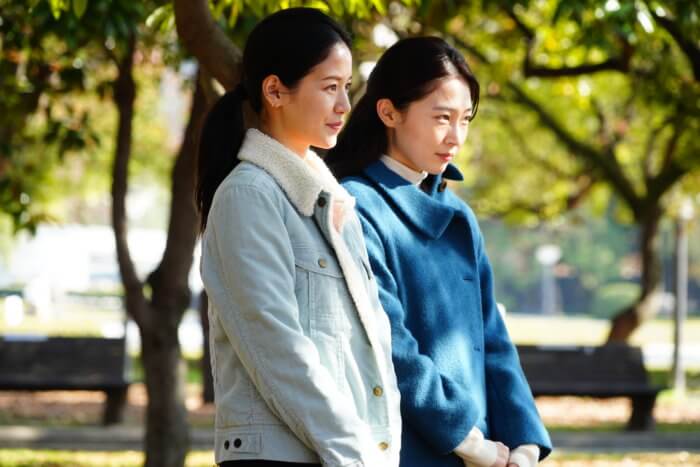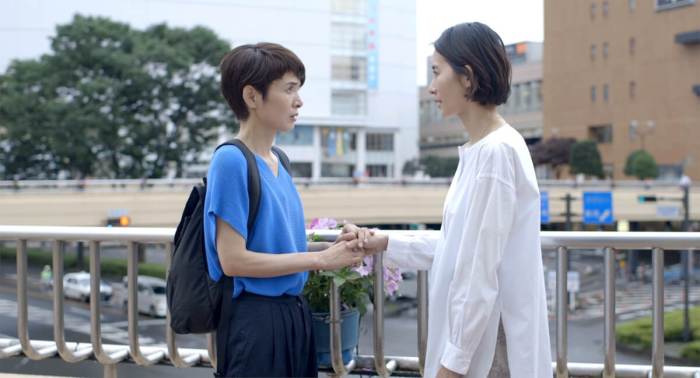A heavy diet of movies will prove the subjectivity of time. An inept 10-minute short can feel like endless torture to sit through. Every film has its own rhythm. Good films follow them, great films create complex new ones. Japanese director Ryusuke Hamaguchi’s “Drive My Car” may not quite land in the latter category, but it continues his interest in playing around with structure and duration. His other 2021 release, “Wheel of Fortune and Fantasy,” which had a run at Film Forum in October, consisted of three unrelated shorts. “Drive My Car” winds up in a more familiar place than one might expect, but it takes a great deal of time getting there.
Adapted from a 50-page Haruki Murakami story, “Drive My Car” opens with a short section about the life of theater actor Yusuke Kafuku (Hidetoshi Nishijima) and his wife Oto (Reika Kirishima), who is a screenwriter. Their marriage has been troubled by her adultery, but at present it’s fairly peaceful. He learns that he suffers from glaucoma and may gradually lose his sight, while she suddenly dies. A “two years later” title appears onscreen, the credits roll, and we arrive at the heart of “Drive My Car.” Yusuke is now staging a production of Chekhov’s “Uncle Vanya,” featuring a woman who speaks in Korean sign language as well as a celebrity actor, Koji (Masaki Okada). Due to the deterioration of his vision, he’s driven around by a chauffeur, Misaki (Toko Miura). The film slowly arrives at a confrontation with the deaths in the past and present of Yuskuke, Koji and Misaki’s lives.
Hamaguchi’s breakthrough was the five-hour, 15-minute “Happy Hour,” and he originally planned for “Wheel of Fortune and Fantasy” to contain seven shorts. In a world where the latest MCU blockbuster runs 157 minutes, the three-hour length of “Drive My Car” isn’t so unusual, but the film’s structure has been bent. It includes a great deal of footage of the casting, rehearsal, and performance of “Uncle Vanya” (as well as a brief glimpse of Yusuke performing in “Waiting for Godot.”) Most directors would completely elide this, treating it as dead space. But Hamaguchi is interested both in the process of art developing and the offstage drama that develops when strangers have to spend much of their time living and working together.

“Drive My Car” does not really come together until its final hour, but it accumulates an enormous charge by that point. It’s full of long shots of the highway, with many of its scenes taking place in cars. It parallels the tension between Yusuke and Oto, in its first half hour, with the platonic interactions that occur when Misaki drives Koji around. But there’s more than mere narrative buildup at work. The film creates a mysterious aura around the road. Following Oto’s death, Yusuke seems to exist in a space between worlds, not quite ready to enter the next stage of his life. When he rides in the car, the scenes last so long that they start to feel like real time. It’s no accident that the car is so central to the film’s title.
And the fact that it will be a literal stage means that Hamaguchi gets to use “Uncle Vanya” much like the Beastie Boys or De La Soul sampled snippets of ‘70s pop songs to speak for them. An audio jump scare from the play leads to a reckoning with real-life violence. Yusuke’s moods are expressed through the play. These interpolations lend weight to the film’s scenario.
Thanks to the film’s patience, its slow-burn approach works beautifully. Even “Wheel of Fortune and Fantasy” had a cumulative impact, with its third short leaning towards a more optimistic approach. Hamaugchi avoids the clichés that come with backstage drama. “Drive My Car” weaves together several storylines into an examination of the long-term effects of grief. (The Hiroshima setting lurks behind all this, although there are no references to the city’s nuclear bombing by the US) Even after all the characters’ emotions have been exposed, it retains an enigmatic air. The car remains ready to drive through more passageways.
DRIVE MY CAR | Directed by Ryusuke Hamaguchi | Sideshow/Janus Films | In Japanese with English subtitles | Opens Nov. 24th at Film Forum and Film at Lincoln Center

































